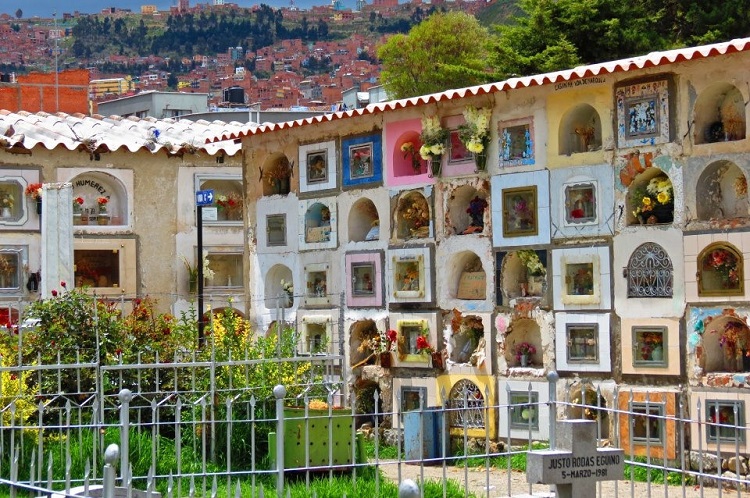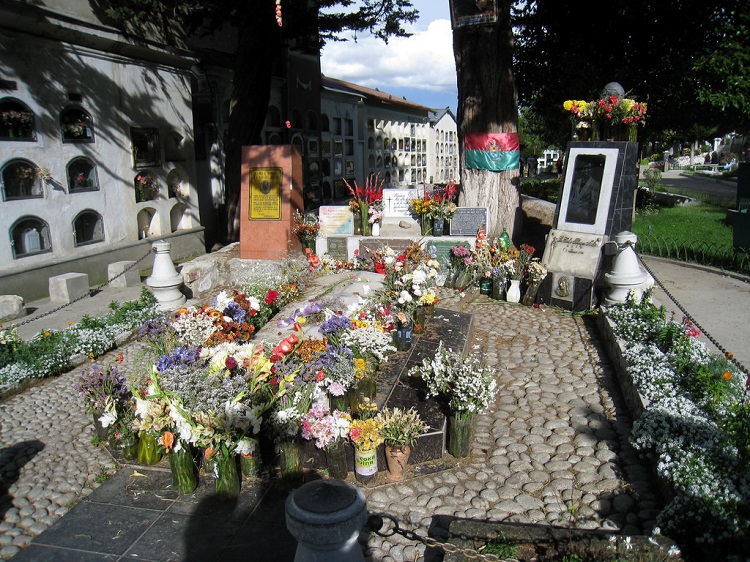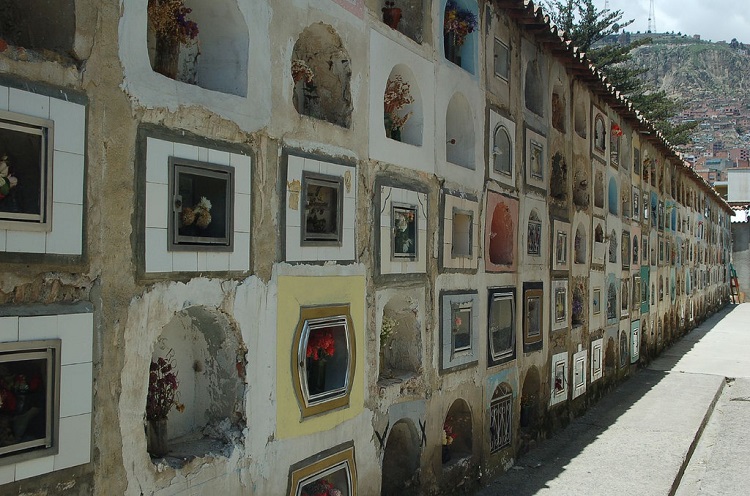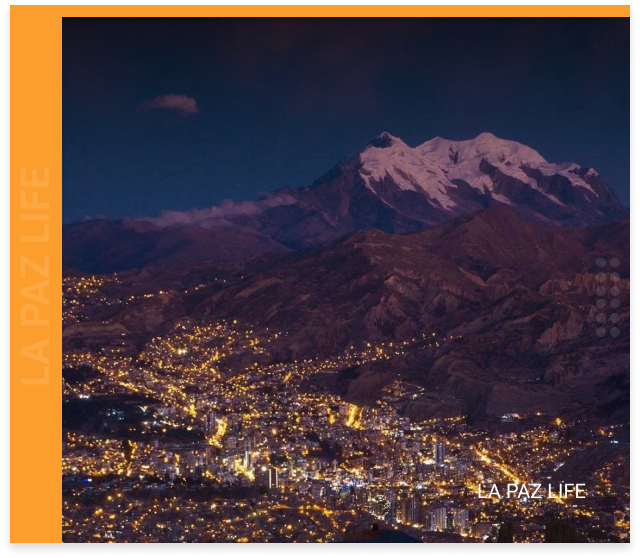Cementerio General La Paz

Photo Credit: Matthew Straubmuller
A vast necropolis, La Paz’s Cementerio General is a unique place of mourning, one which evokes a sense of celebration and hope rather than grief and loss.
Established by supreme decree on January 25 1826 by Marshal Antonio Jose de Sucre, Cementerio General was built to provide a final resting place for La Paz’s deceased. Prior to this date, locals were buried in the courts of the churches; an unsustainable practice given La Paz’s growing population. In the 1930s, the Bolivian Government took control of the grounds, turning it into a public cemetery for the city’s poorer residents who did not have land or resources to bury their own.
Spread over 3kms, Cementerio General is Bolivia’s largest, with just over 95% of the cemetery currently occupied. At the entrance of the cemetery is a small church where funerals are held and the large tower in the centre is the crematorium. Divided into three sections, the grounds are filled with subtle tombstones, extravagant mausoleums, heavy stone sarcophagi and endless rows of concrete blocks over fours stories high.
In place of ground burials are walls of tombs stacked one upon the other, each hidden behind glass-plated shrines which are decorated with photos, flowers and objects dear to the deceased; a ritual which ensures the soul of the dead has everything it needs to make a smooth transition into the afterlife.

Photo Credit: Dvortygirl
In order to combat overcrowding at Cementerio General, a rule has been enforced that crypts can only be rented for a maximum of 10 years, after which time remains must be cremated and the ashes collected by the deceased’s family. There is then the option to rent a smaller glass-faced compartment where the ashes can be stored.
With the cost to purchase a plot in perpetuity costing over 10 times the minimum monthly wage, it’s not surprising that the rental arrangement has been a contentious issue. It’s not unusual for families who accidentally miss the deadline or can’t afford to pay rent to find that the body of their family member has been removed and can no longer be retrieved.

Photo Credit: Marv Gillibrand
Seen as a continuation of life rather than a final goodbye, when a loved one passes in Bolivia it is customary for family members to frequent the grave, leaving offerings to ensure the soul of their relative is taken care of. Locals also head to the cemetery to pray to the dead for guidance and protection.
La Paz Life Quick Tip:
As voted the best way to travel around Bolivia and Peru, we highly recommend choosing Bolivia Hop as your means of transport. Their safe, flexible and trustworthy service have proven to be the best way of getting the most out of your time in South America!
While visiting a cemetery on your travels may seem a little morbid, La Paz’s cemetery is unique in that it’s more bustling and lively than quiet and sombre. Walking around you will notice people behaving as they would at any of the city’s plazas – casually chatting with friends, reading books, or simply relaxing as they contemplate life. One of the most popular days to visit Cementerio General is during the annual Dia de los Muertos festivities, which sees La Paz’s residents arrive at the cemetery en-mass to celebrate, commemorate and farewell the visiting dead.
How To Get To Cementerio General
The simplest way to get to Cementerio General is to take a cable car on the red line to Estación Teleferico Cementerio. The back entrance to the cemetery is located right near the station.
Next to Cementerio General you will also find a bus station which provides transport to Copacabana and Tiwanaku.
Tours Of Cementerio General
In order to get the most out of your time visiting Cementerio General a good option is to join a guided city walking tour where you can learn about Bolivia’s fascinating history and culture as well as discover the graves of Bolivia’s most prominent personalities.














Let's Discuss...